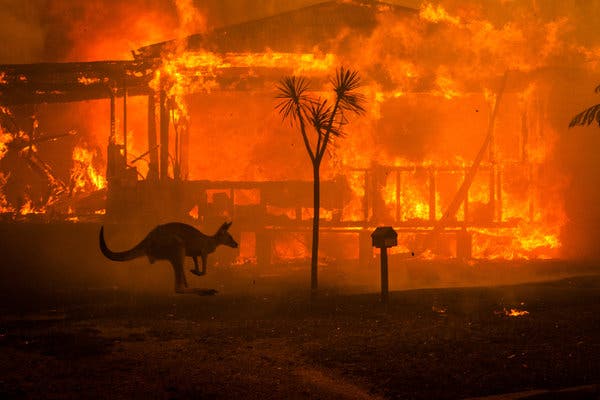
Storms are more often tracking over the ocean rather than over land, depriving the continent of much-needed water.
Australia’s “worst fire season ever recorded.” That’s how the Australian Broadcasting Company, among many others, aptly described as “an apocalypse,” “the gates of Hell,” or the “nightmare” bushfires that have enveloped much of the southeastern coast of the “land down under.”
It’s not that there haven’t been breath-taking bushfires and heat waves in the past in Australia. There certainly have been. But “the nature of them this year has changed,” experts say in this month’s “This is Not Cool” video by Peter Sinclair for Yale Climate Connections. It’s not just a drought that afflicts Australia nowadays, two experts agree, but a fundamental “shift in the storm track,” with a parching decline in rainfall, particularly during the Southern Hemisphere spring and summer months, becoming the proverbial “new normal.”
It’s the frequency and intensity of those conditions that is so concerning, says University of Melbourne scientist Linden Ashcroft. She says the trends are “exactly in line with what the [climate] science said 10 or 20 years ago.” Broadcast meteorologist Jeff Berardelli points to a single recent day on which the entire enormous continent of Australia recorded a country-wide average temperature of 107 degrees Fahrenheit. National Center for Atmospheric Research climate scientist Kevin Trenberth says a single month of such high temperatures often can be tolerated without lasting damage, but at two months or longer, as with this year’s bushfire season, serious damages can set in and be long-lasting.
Credits
Yale Climate Connections